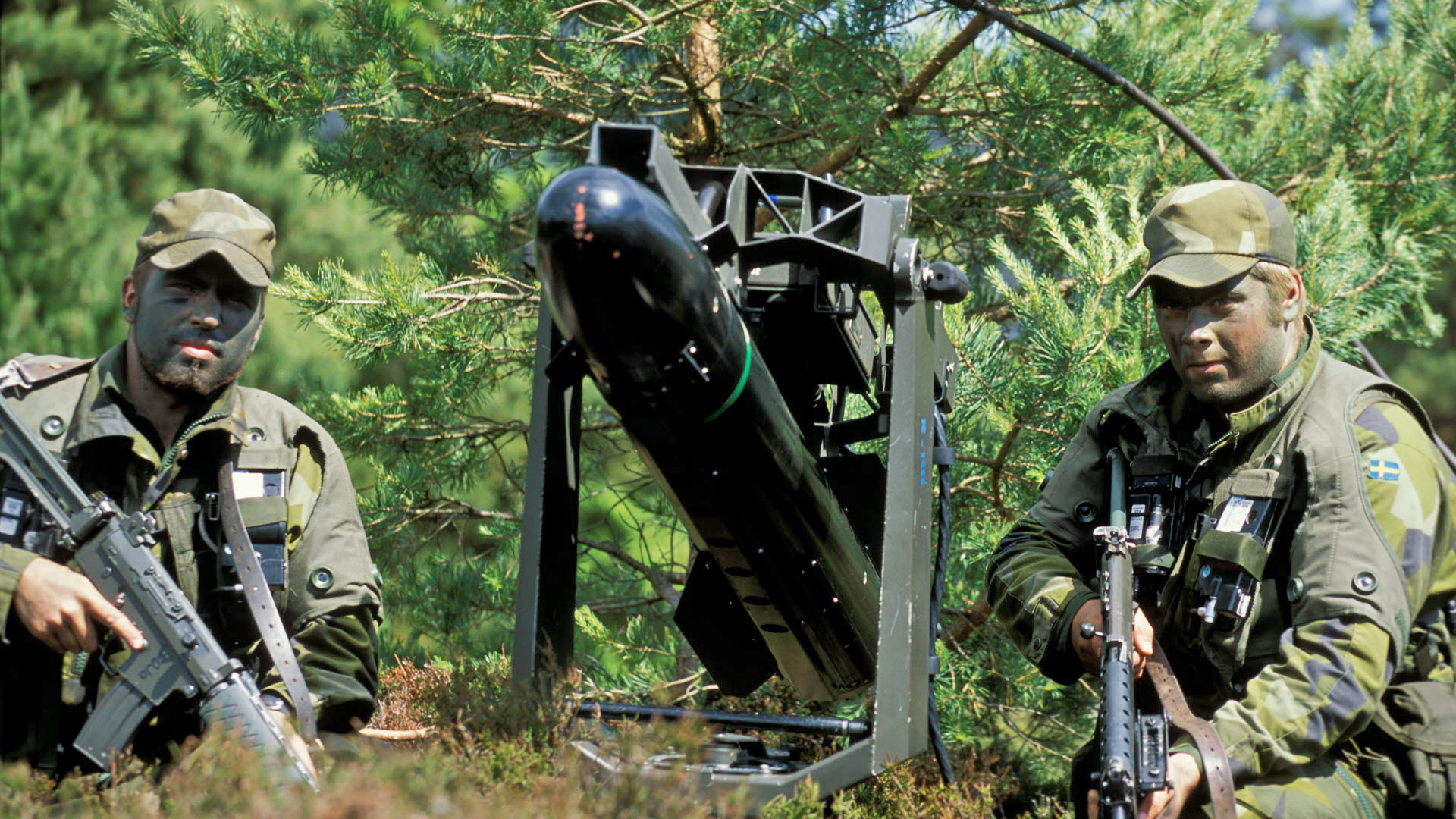Sweden’s Ministry of Defense announced that the country would be delivering its third aid package to Ukraine, and this time around, Ukrainian forces will be getting the Robot 17 anti-ship missile system. Sweden’s donation of the Robot 17 is the latest example of what seems to be a growing willingness among allied nations to supply the Ukrainian military with more advanced weaponry.
In addition to the Robot 17 system, the $102 million package includes financial aid for both the Ukrainian central bank’s fund as well as NATO’s fund for Ukrainian armed forces, 5,000 anti-tank launchers that unofficial sources have claimed to be AT4 light anti-armor weapons, and AG90 rifles and ammunition. An additional $10.6 million will go to civilian efforts through the Swedish Civil Contingencies Agency. However, the Robot 17 system will likely be among the more eagerly anticipated aspects of the delivery.



The Robot 17 system is a Swedish anti-ship/coastal defense derivative of the U.S.-made AGM-114 Hellfire missile and was first manufactured in the 1980s by Bofors Defense (now known as Saab Bofors Dynamics). While the Hellfire missile system was designed to neutralize armored vehicles at stand-off ranges often aboard an attack helicopter, like the AH-64 Apache, the man-portable Robot 17 can be launched from a shoreline firing post as well as naval vessels. The missile itself is laser-guided with a range of roughly up to five miles, but this is likely a bit less under normal operating conditions.
The Swedish Ministry of Defense said that the delivery of the Robot 17 was specifically requested by the Ukrainian government to address the increasing Russian presence in the coastal regions of southeastern Ukraine. The man-portable Robot 17 is ideal for protecting against amphibious invasions and is quite survivable as units can easily set up and position the system for firing.
The system also has a secondary capability to attack land targets that could come in handy, as well.
The delivery of the Robot 17 systems, as well as the rest of the third aid package coming from Sweden, indicates a historic shift in the country’s geopolitical ethos. Since 1939, in the name of neutrality, Sweden’s policy was largely centered around not sending weapons to countries in active conflict. Sweden first went against that doctrine in February when the initial $95.9 million aid package was announced. The traditionally non-militarily aligned country also recently filed joint applications with Finland to join NATO. Now, with the third aid installment currently being processed, Sweden isn’t shying away from outwardly supporting Ukraine.
“The Russian invasion of Ukraine is unprovoked, illegal, and indefensible.” Reads the official announcement released by Sweden’s Ministry of Defense. “It threatens international peace and security and is a violation of international law. In solidarity with Ukraine, and as part of the international response to Russia’s actions, the government sees a continuing need to support Ukraine.”

Other allied countries are also ramping up advanced weapons deliveries, or pledged deliveries, to Ukraine. In mid-May, what is likely to be the first recorded footage of the U.K.-suppled Brimstone anti-armor missile system began to surface. The Brimstone is a weapon system similar to the Robot 17 with a loosely common heritage, although Brimstone is more advanced with autonomous attack capabilities, and it is manufactured by the European missile consortium MBDA. The ground-launched Brimstone can also be used against ships near shore and it can do so in any weather, which is not possible for the Robot 17 system.
Mere days later, U.S. Secretary of Defense Lloyd Austin announced that the government of Denmark would be delivering an unspecified number of RGM-84 Harpoon anti-ship missiles and shore-based launchers to the Ukrainian military to help bolster their coastal defense. With that in mind, it is likely that the Harpoons will be operating alongside the Robot 17s as Ukrainian forces attempt to deter the Russian Navy’s advances. The Harpoon will provide true standoff, long-range, over-the-horizon defense out dozens of the miles, while Robot 17 could provide close-in shore defense, especially against small boats and amphibious forces.

Just this week German Chancellor Olaf Scholz promised to provide Ukraine with Germany’s highly advanced IRIS-T surface-to-air defense system. Manufactured by Diehl Defense, the IRIS-T guided missile is designed to hit targets up to 25 miles away and will provide Ukraine with much-needed advanced air defense capability. The timing of delivery is still unknown, but it will take time, training included, even if the system is diverted from an existing order.
The United States has also announced a number of new deliveries slated to be sent to Ukraine in the coming weeks. Included in the newest $700 million security assistance package are at least four M142 High-Mobility Artillery Rocket Systems, or HIMARS. Ukrainian troops will train on them for three weeks before the systems enter service in the country, and the Lockheed Martin-manufactured launchers are expected to be delivered along with guided munitions that are designed with a range of about 43 miles. U.S.-supplied Guided Multiple Launch Rocket Systems (GMLRS) may also be on their way to Ukraine but weren’t listed in the breakdown of the recent aid package.
Needless to say, Ukraine’s arsenal is about to get quite the boost. With several countries now answering the call to help arm and support Ukrainian forces, the threat landscape for Russian invaders will surely be changing. This is especially true in the naval realm, where Ukraine went from very few shoreline defenses to a layered credible set of systems in just a short span of time thanks to these latest donations.
Contact the author: Emma@thewarzone.com
